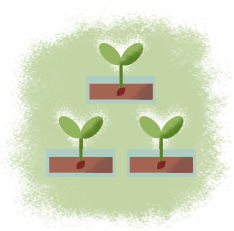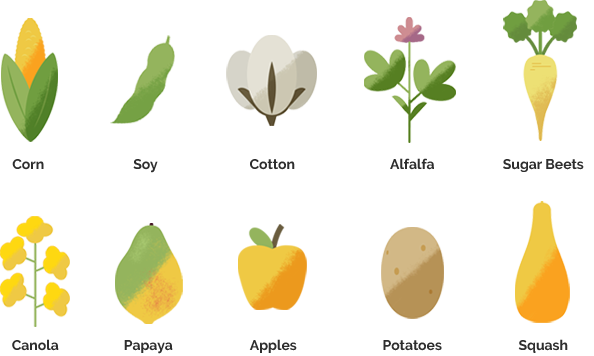Stories | December 1, 2016 | Read Time: 3 minutes
Looking for Information on GMOs? These Are the GMO Facts
GMO seeds are just one of the many ways Monsanto is helping farmers sustainably grow enough for a growing world. But they’re also without a doubt the one we hear questions about the most. Some of the more common questions about GMOs are:
"What are GMOs?"
"Why do some farmers choose to grow them?"
"Are they safe to eat?"
We’re taking a closer look at these questions and some often-searched for GMO answers.
GMOs are Genetically Modified Organisms
One of the most important GMO facts is that GMOs are developed with beneficial traits that help them thrive in their environment. Think drought-tolerant corn, or pest-resistant soybeans that need less bug spraying. That helps farmers and better harvests benefit everyone, impacting what’s available at the store…and what we can put on our plates.
How are GMOs Created?


1. The desired trait (like disease resistance or drought tolerance) is identified in nature.


2. The gene for the trait is transferred into a plant seed.


3. The plant is tested to ensure that it is safe for people, animals and the environment.


4. Only after years of rigorous testing are the seeds from those plants made available to farmers.
GMOs Are Studied Carefully Before They Enter the Market
GM crops undergo more testing and oversight before commercialization than any other agriculture product, including conventional (non-GMO) crops. On top of the government safety approvals, GM crop data have been reviewed by third-party scientific experts who agree they’re safe, including:
- Food and Drug Administration
- World Health Organization
- American Medical Association
- European Academies Science Advisory Council
- The Royal Society
- National Academy of Sciences
Learn more about what it takes to bring a GMO to market
What Foods Are GMOs?
There are currently eight commercially available GMO crops that appear on store shelves or are used to make other food ingredients—corn, soybeans, cotton, alfalfa, sugar beets, canola, papaya, and squash. GMO apples and potatoes have recently completed the FDA and USDA review process and will soon be available in stores as well.


GMOs Can Help Us Feed the World in a Sustainable Way
With food demand expected to grow significantly by 2050, GMOs are one of the tools that can help farmers sustainably grow enough for a growing world by using less of our precious resources. Using these seeds, we can conserve water and land—preserving natural habitat around the world.
We hope these GMO facts have helped make GMOs a little easier to understand. If you’re still seeking more GMO answers, please do not hesitate to ask us your questions. We encourage everyone to be part of the conversation!










